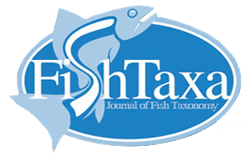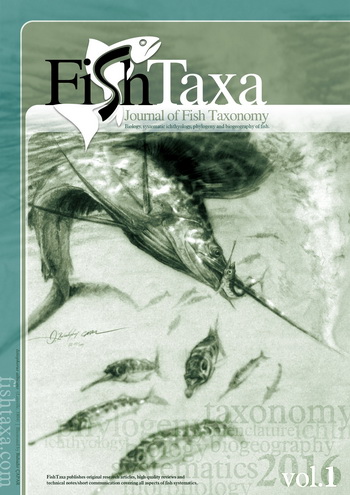Record of Rhonciscus crocro (Cuvier, 1830) (Haemulidae: Haemulinae) in the Usumacinta River, Mexico
Raúl Enrique HERNÁNDEZ-GÓMEZ Universidad Juárez Autónoma de Tabasco, División Académica Multidisciplinaria de los Ríos, Tenosique-Estapilla Km 1.0, México, Tabasco, CP 86901, Tenosique, Mexico.
Rocío RODILES-HERNÁNDEZ El Colegio de la Frontera Sur Unidad San Cristóbal, Conservación de la Biodiversidad., Periférico Sur s/n, María Auxiliadora, México, Chipas, CP 29290, San Cristóbal de las Casas, Mexico.
Manuel MENDOZA-CARRANZA El Colegio de la Frontera Sur Unidad Villahermosa, Departamento de Ciencias de la Sustentabilidad, Villahermosa-Reforma km 15.5 Ranchería Guineo sección II, México, Tabasco, CP 86280 Villahermosa, Mexico
Ignacio VALENZUELA-CÓRDOVA Universidad Juárez Autónoma de Tabasco, División Académica Multidisciplinaria de los Ríos, Tenosique-Estapilla Km 1.0, México, Tabasco, CP 86901, Tenosique, Mexico.
Martha A. PERERA-GARCÍA Universidad Juárez Autónoma de Tabasco, División Académica de Ciencias Agropecuarias, Villahermosa-, Teapa, México, Tabasco, Km. 25, CP 86900, Teapa, Mexico.
Martha A. PERERA-GARCÍA Universidad Juárez Autónoma de Tabasco, División Académica de Ciencias Agropecuarias, Villahermosa-, Teapa, México, Tabasco, Km. 25, CP 86900, Teapa, Mexico.
Abstract
This paper documents the occurrence and range extension of Rhonciscus crocro (Cuvier 1830) more than 370 km, from the coastline of the Gulf of Mexico, the largest distance reported in freshwater for this species. Despite the commercial interest, information on the biological aspects, abundance, and distribution of this species in the Usumacinta River is scarce. The IUCN Red List classifies this species within the criteria of data deficient. Specimens were collected from artisanal fisheries. This species is distinguished from its congeners by its short pectoral fins do not reach the ends of the pelvic fins and by the smaller scales in the longitudinal. This new record expands the geographical distribution and size of this species. Current research reports meristic and morphometric data of eleven organisms, ranging from 22.1 to 41.9 cm of total length, increasing the known size range of this species.

